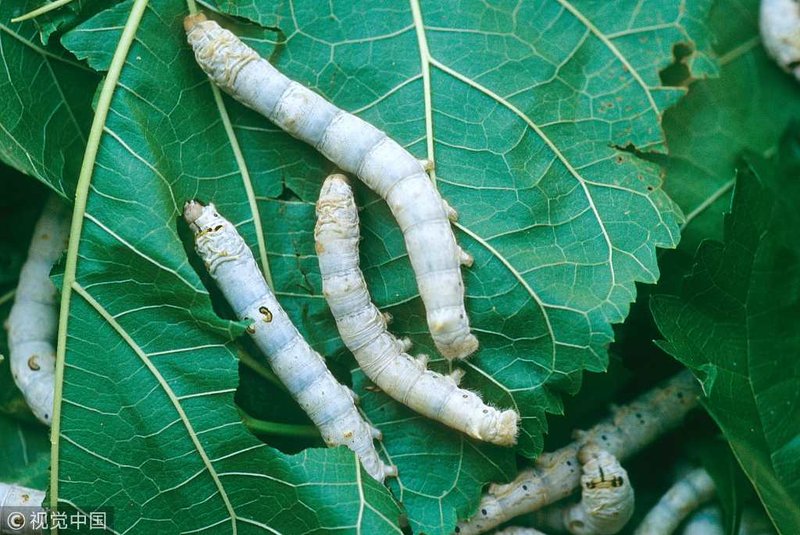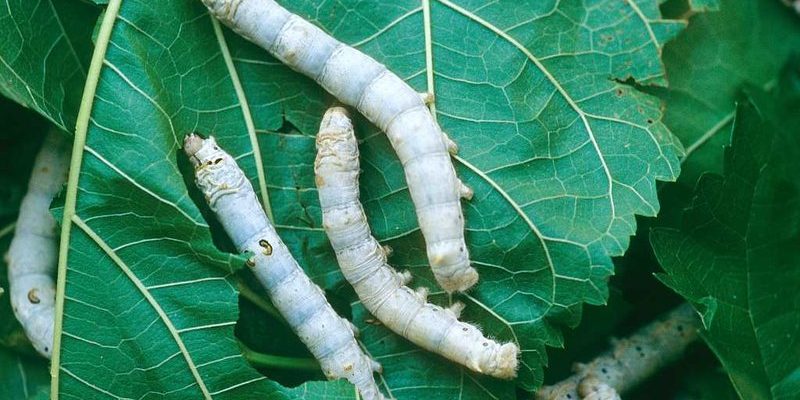
Honestly, understanding the connection between mulberry leaves and silkworm diets can be a bit like peeling an onion. You start with a simple outer layer, but as you dig deeper, you uncover layers of fascinating information. Let’s break it down, exploring why mulberry leaves are vital for silkworms and how they contribute to the silk industry as a whole.
What Are Mulberry Leaves?
Mulberry leaves come from the mulberry tree, which is a deciduous tree found in various parts of the world. These trees thrive in warm climates, and their leaves are soft, tender, and very nutritious. You might think of them as the ultimate leaf snack for silkworms. In fact, they’re almost like a “superfood” for these little creatures!
Mulberry trees produce different species of leaves, but the preferred ones for silkworms are from the **white mulberry** (*Morus alba*) and **red mulberry** (*Morus rubra*). The fascinating part is that the nutritional content varies slightly between species, but for silkworms, they all pack a punch. These leaves are rich in proteins, vitamins, and minerals that are crucial for the growth and development of silkworms.
Why Are Mulberry Leaves Essential for Silkworms?
You might be wondering why mulberry leaves are so important for silkworms. Well, think of it this way: just like humans need a balanced diet to stay healthy and function properly, silkworms rely on mulberry leaves for their growth and silk production.
Silkworms are known for being quite picky eaters, and they can only thrive on mulberry leaves. This specificity means that if they don’t get enough of these leaves, their growth becomes stunted. They may not spin silk at all, or the quality of the silk can decline dramatically. So, you can see why mulberry leaves are a must-have in their diet!
Moreover, the leaves have a unique structure that makes them easy for silkworms to munch on. The soft texture allows the worms to consume them quickly, fueling their transformation into silk-producing machines. It’s a win-win situation!
The Nutritional Value of Mulberry Leaves
Mulberry leaves are loaded with essential nutrients that play a pivotal role in the life cycle of silkworms. Here’s a quick breakdown of what makes these leaves so special:
- Protein: Mulberry leaves contain about 25-30% protein, which is crucial for the development of silkworms. Just like athletes need protein for muscle growth, silkworms need it for their growth and silk production.
- Vitamins: These leaves are high in vitamins like A, B, C, and K. These vitamins help silkworms stay healthy and support their overall metabolism.
- Minerals: Calcium and potassium are important for silkworms’ growth, and mulberry leaves have plenty of both. These minerals contribute to their structural integrity and functional processes.
- Water Content: Mulberry leaves have a high water content, which helps to keep silkworms hydrated as they munch away.
With such a rich nutritional profile, mulberry leaves don’t just serve as food; they’re a comprehensive diet for silkworms!
How Mulberry Leaves Impact Silk Production
Silk production is a fascinating process, and it all starts with the right diet. When silkworms consume mulberry leaves, they convert the nutrients into energy and use it to grow and develop. The silk fibers that come from these worms are actually made up of proteins derived from the leaves.
You might think of silk production as a factory assembly line—each step depends on the previous one. If the silkworms aren’t getting enough quality mulberry leaves, the entire process can be compromised. They may produce less silk, or the silk quality may suffer, leading to weaker threads that aren’t suitable for high-end textiles.
Interestingly, researchers have even found that the specific type of mulberry leaves can affect the quality of the silk. For instance, silkworms fed on young, tender leaves often produce finer, stronger silk compared to those fed on older leaves. It’s a bit like how chefs choose the best ingredients for their dishes to create the best flavors!
How to Cultivate Mulberry Trees for Silkworms
If you’re thinking about growing mulberry trees to support silkworms, you’re in for a treat! Cultivating these trees can be rewarding and fun. Here’s a simple step-by-step guide to get you started:
1. **Choose the Right Variety:** There are many types of mulberry trees, but the white mulberry is the most commonly used for silkworms. Make sure you select a breed that grows well in your climate.
2. **Soil Preparation:** Mulberry trees prefer well-drained soil enriched with organic matter. Before planting, till the soil and mix in compost to ensure healthy growth.
3. **Sunlight and Water:** These trees love sunlight, so plant them in a location that gets plenty of it. Regular watering is essential, especially during the dry seasons, but avoid overwatering.
4. **Pruning:** Regular pruning helps keep the trees healthy and encourages new leaf growth, which keeps your silkworms fed. Focus on removing any dead or diseased branches.
5. **Monitoring:** Keep an eye on your trees for pests and diseases. Healthy trees produce healthy leaves, and that’s what you want for your silkworms!
By cultivating mulberry trees, you’re not just growing a plant; you’re creating a sustainable ecosystem for silkworms!
Common Challenges in Feeding Silkworms
Caring for silkworms can come with its own set of challenges, especially when it comes to feeding them mulberry leaves. Here are some common issues you might encounter:
– **Access to Quality Leaves:** Depending on where you live, finding fresh mulberry leaves can be tricky. If you can’t find them locally, consider growing your own, or look into purchasing from a reliable source.
– **Leaf Storage:** Once you’ve harvested the leaves, keeping them fresh can be a challenge. Store them in a cool, dry place. You can also refrigerate them to prolong their life, but avoid freezing, as this can damage the leaves.
– **Leaf Nutritional Quality:** Not all mulberry leaves are created equal. It’s essential to monitor the health of your trees, as poor soil conditions can lead to lower nutritional quality in the leaves.
– **Pest Control:** Silkworms are susceptible to pests and diseases. Proper management of your silkworm environment is crucial to ensuring they have a healthy diet from mulberry leaves.
It’s essential to be proactive and address these challenges to ensure your silkworms thrive on their required diet of mulberry leaves.
Mulberry leaves are not just food for silkworms; they’re a fundamental source of nutrition that directly impacts their growth and the quality of the silk they produce. With the right understanding and care, growing mulberry trees can be a rewarding venture that supports both silkworms and the silk industry as a whole.
Whether you’re a hobbyist looking to raise silkworms or just curious about the silk production process, mulberry leaves play a vital role in this fascinating cycle of nature. Remember, the next time you admire a silk scarf or a luxurious silk bedspread, it all starts with those humble, green mulberry leaves!

